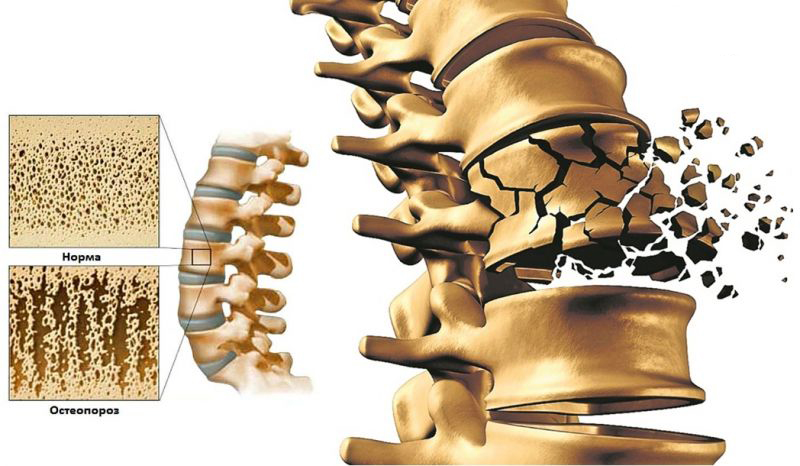OSTEOPOROSIS
Osteoporosis is a chronic skeletal disease in which bone mass decreases and bone structure is disturbed. The bones lose their strength and become brittle, making them prone to fractures.
Osteoporosis is a growing global problem that recognizes no boundaries. As numerous epidemiologic studies have shown, there is no race, nation, ethnic group or country in which osteoporosis does not occur.
According to WHO, osteoporosis is the fourth most common non-communicable disease in the world after cardiovascular diseases, cancer and diabetes mellitus. Osteoporosis affects one in three women and one in eight men worldwide. In 1997, the World Health Organization (WHO), recognizing that osteoporosis is an important global public health and health problem, declared October 20 as World Osteoporosis Day.
Thus, about 15% of women aged 30-40 years have reduced bone mineral density. This problem is also found in 49% of pregnant women, as well as in 38-43% of children aged 5 to 18 years, and osteoporosis is detected in 10-11% of adolescents aged 14-15 years and in 5-6% of adolescents aged 17-18 years.
Risk factors for the development of osteoporosis: age over 65 years, female gender, early menopause - up to 45 years, hereditary predisposition, some endocrine diseases, unbalanced diet, insufficient intake of calcium and vitamin D with food, low motor activity and low body weight.
Decrease in height by more than 2 cm per year, a clear change in posture, periodic pain, not strong, aching, occurring in the lumbar or thoracic spine, decreasing when lying down. If you observe such symptoms - it is necessary to consult a doctor.
For a long time, these changes may not make themselves known until the first fracture occurs. And fractures associated with osteoporosis can occur with small bruises, falls from a height of one's height, a sharp bend, when sneezing, coughing, lifting heavy bags, and sometimes without any visible external impact.
Such a type of preventive medical examination as densitometry can detect bone mineralization disorders and diagnose osteoporosis in time.
The basis of osteoporosis prevention is a healthy lifestyle, including sufficient physical activity, a rational diet with calcium and vitamin D-rich foods, moderate, normalized sun exposure.
Regular exercise 3-4 times a week for 30-40 minutes can increase bone mass by 3-5% within two to three months.
To know your risk of osteoporosis and to protect yourself from fractures, you should get an annual checkup, especially for women over 50.
Some facts about osteoporosis and related fractures:
Osteoporosis is responsible for 9 million fractures occurring worldwide each year.
Every 3 seconds, 1 new fracture occurs worldwide.
When bone density decreases by 10%, the incidence of fractures increases 2-3 times.
With the fracture of each vertebra, the height of a person decreases by 1-3 cm on average.
Spinal fractures against the background of osteoporosis are diagnosed in 25% of women over 50 years of age.
At the age of 50 years and older, 1/3 of women and 1/5 of men in the world will suffer at least one osteoporosis-related fracture in their future years of life.
Fractures occur on average 10 years later in men than in women, but are associated with greater mortality from hip fracture within the first year after fracture.
In women, the risk of femoral neck fracture exceeds the combined risk of breast, ovarian, and uterine cancer. In men, the risk of fracture exceeds the risk of prostate cancer.
After a fracture of any localization, the risk of recurrence doubles.
People over the age of 50 are at higher risk of osteoporosis than younger people. At the same time, osteoporosis may develop at an earlier age, especially in patients suffering from some endocrine, rheumatic diseases, severe intestinal lesions (Crohn's disease, nonspecific ulcerative colitis), after transplantation of internal organs, people with limited mobility due to any reason, as well as patients taking certain drugs (glucocorticoids, thyroid hormones, anticonvulsants, etc.) for a long time.
Inoyatova Nigina Azizovna – c.m.s., associate professor of the department of endocrinology of SEI “Avicenna Tajik State Medical University”
Translated Ismoilov R.

